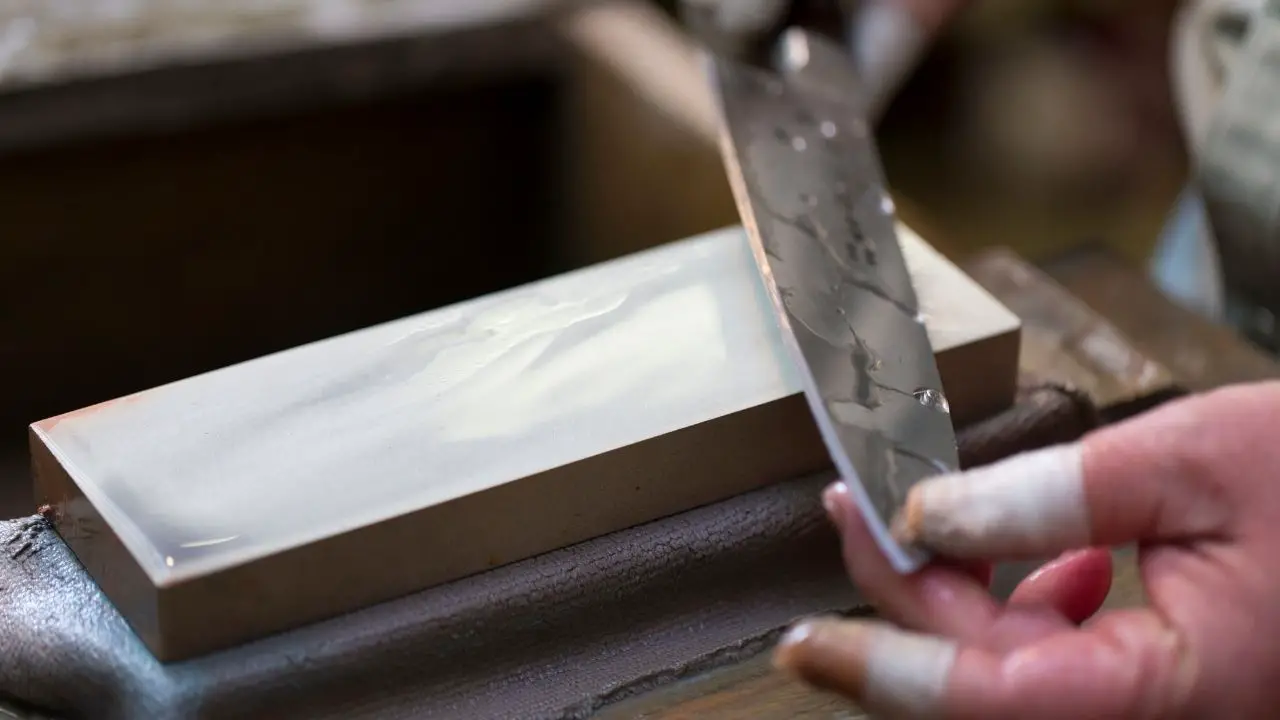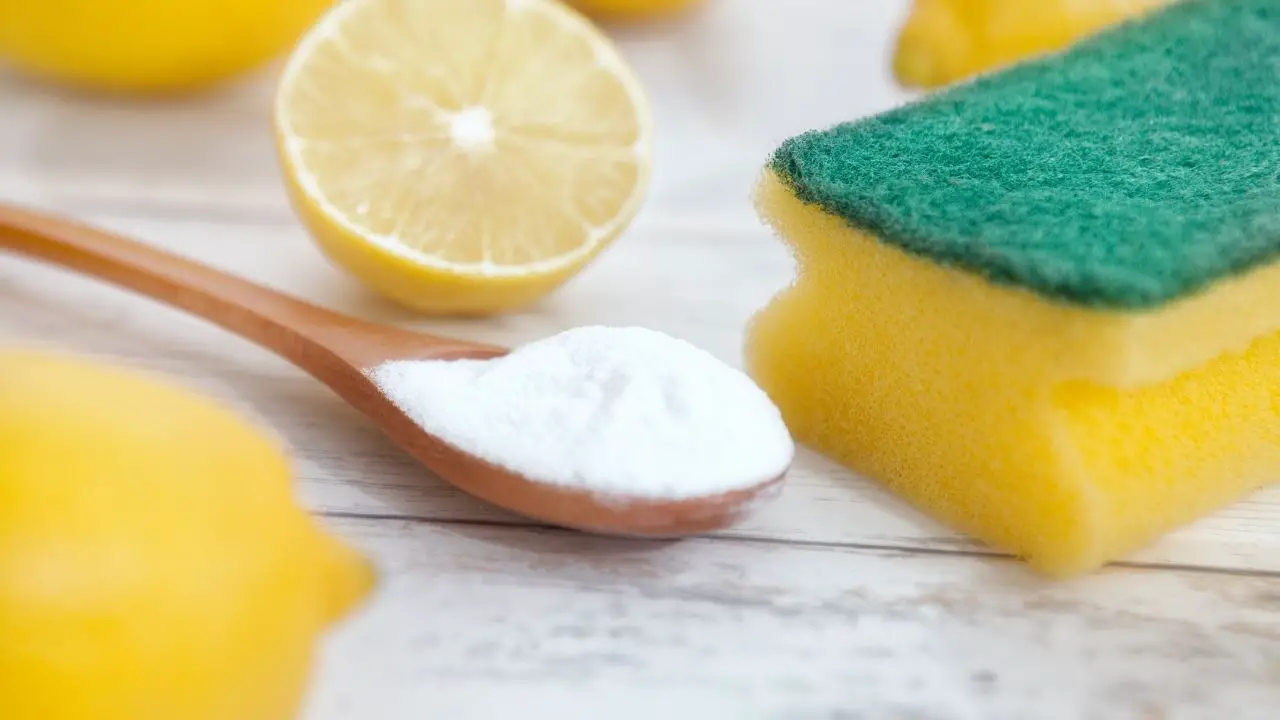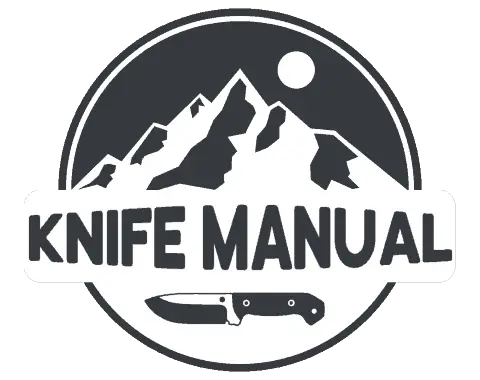Most of the time, you work hard to get a good patina on your blade, but you may want to remove a patina from your knife in certain situations. There are many ways that you can mess up your blade when removing a patina, so ill walk you through how to do it safely and effectively.
To remove a patina from a knife blade, use either a mildly abrasive material such as a 6000 grit sharpening stone or an acidic compound like baking soda. Lightly run the blade along the sharpening stone until the patina comes off, or make a water and baking soda paste to scrub off the patina.
Just to make sure we’re all on the same page, a patina is a thin layer of corrosion that forms on the surface of steel under the right circumstances. It helps to prevent harmful rust and makes the knife more visually appealing when developed correctly.
Beyond baking soda and sharpening stones, there are many other methods for removing a patina from a knife, so let’s look at other ways to safely and effectively go about this.
Table of Contents
How to Remove a Patina From a Knife Blade

The general idea behind most methods of patina removal is to polish the layer of corrosion (the patina!) off of the surface of the blade steel. There are many ways to remove a patina from a knife blade, and in this article, we’ll cover the following methods:
- Sharpening stone
- Sandpaper
- Steel wool
- Baking soda
- White vinegar
- Metal polish
- Rust eraser
When removing a patina, the most important thing is to go slowly and be gentle with your knife. Many of the materials and tools that you’ll use to remove the patina have the potential to seriously harm your blade if you’re not careful, so take it slow and don’t push too hard on your blade.
Sharpening Stone Method
Using a sharpening stone to remove a patina from a knife is one of the most effective and best methods. Sharpening stones grind off microscopic layers of metal to sharpen a knife, making them perfect for removing a patina from a blade.
What You’ll need:
- Fine grit sharpening stone (5000+ grit)
- Water or other lubricant
Instructions:
- Start by wetting your sharpening stone with water or other lubricant (if needed) and set up your work area.
- Next, hold your knife horizontally and VERY LIGHTLY run the flat edge of the blade back and forth across the sharpening stone until your patina is polished off.
- Once you’ve removed the patina from your knife, clean your blade with some warm water and a toothbrush to get any remaining residue. Then, thoroughly dry and oil your knife.
Using a sharpening stone can be dangerous if you’re not careful and if you don’t have a stone that is a fine enough grit. The finer the grit, the less of a chance that you’ll harm your blade and scrape it beyond just removing the patina.
Sandpaper Method
Similar to the previous method, using sandpaper to remove a patina involves using sandpaper to scrape off the patina from the blade and is highly effective. You have to be careful, though, because it’s pretty easy to sand too much and end up removing the patina and ruining your blade in the process.
What You’ll Need
- Extra fine grit sandpaper (280+ grit)
- Water or other lubricant
Instructions
- Begin by putting some lubricant on your knife blade (you can use water, mineral oil, or another safe lubricant) and set up your work area where you’ll be removing your knife’s patina.
- Hold your knife horizontally and run some super fine sandpaper over the patina on the flat edge of the blade. Then, carefully and lightly continue going back and forth until you have removed the patina.
- Once done, clean off your knife with some warm water and an old toothbrush by lightly going in small circles along the blade to polish it up. Thoroughly dry your knife, give it some oil if needed, and you’re finished.
The key to being successful in this method of patina removal is to take it slow and use as fine sandpaper as you can possibly find.
Baking Soda Method

If you want something less abrasive to remove a patina from your knife, the baking soda method is an excellent alternative to sandpaper or a sharpening stone. You are less likely to harm your knife with this method (though you still can), making it ideal for beginners and knives that you really value.
What You’ll Need
- A small bowl or cup
- Baking soda
- Water
- A sponge or old toothbrush
Instructions
- Begin by mixing baking soda and water in a small bowl or cup until it is a paste-like consistency. It isn’t an exact science, but make sure it isn’t too clumpy or liquidy, or it will be difficult to clean your knife.
- Next, hold your knife horizontally with a flat side of the blade facing upward and apply a thin layer of your baking soda and water mixture to the blade.
- Let the paste sit for a few seconds, and then use a sponge or old toothbrush to scrub your knife blade until you have removed the patina.
- Once done, rinse off your knife blade and thoroughly dry it. Oil your knife if needed.
If you want a more acidic mixture to remove a patina faster, you can substitute lemon or lime juice for water. However, be extra careful if you decide to do this because the extra acidity can hurt your knife blade if you let it sit for too long on the steel.
Metal Polish Method
A popular method for cleaning knives and removing rust from blades is by using metal polish. While metal polish isn’t best for all blade finishes, it’s very effective at removing unwanted patinas if your knife doesn’t have a blade finish or you value removing the patina over preserving your knife’s finish.
What You’ll Need
- Metal polish (Simichrome metal polish
 is excellent)
is excellent) - Paper towels or a sponge
Instructions
- Prepare the area where you’re going to be working on your knife, and make sure to clean your knife’s blade.
- Next, hold your knife in a clamp on a flat surface horizontally, so a flat side of the blade is facing upwards.
- Put a bit of metal polish on your paper towel or sponge, or you can apply it directly to the blade and use your paper towel or sponge to scrub your knife blade lightly.
- Once you’ve removed your patina, rinse off your knife blade and dry it thoroughly. Oil your knife if needed.
Out of all the methods on this list, using metal polish is probably one of the quickest and simplest ways to remove a patina. Metal polish is an abrasive by nature, so you should still be careful not to hurt your blade when using it on your knife.
White Vinegar Method
Another great way to remove a patina from your knife is by using white vinegar. This method isn’t as strong as the others on this list, so it’s ideal for light patinas that don’t need a lot of brute force to remove.
What You’ll Need
- A tall cup or container
- White vinegar
Instructions
- Fill a cup or container tall enough to submerge your entire knife blade with white vinegar.
- Next, submerge your knife blade in the container of white vinegar and let sit for 2-5 minutes.
- Once you’ve soaked the knife blade in vinegar, remove the knife from the glass and thoroughly dry it off. To avoid the vinegar starting a new patina, make sure your knife is extremely dry. You should also put some baking soda on your blade to neutralize the acidity of the vinegar for extra protection.
When using this method to remove a patina from your knife, make sure to keep an eye on your blade throughout the process and be ready to remove your knife from the vinegar quickly. The acidity of the vinegar affects different metals in different ways and may remove the patina from your blade faster than 5 minutes.
If there is still some patina leftover after using this method, you could try again or use another technique from this list.
Rust Eraser Method
While less popular than the other methods on this list, rust erasers can work well for removing a patina from your knife blade. Rust erasers are extremely simple to use and make getting light patinas off relatively easy and hassle-free.
What You’ll Need
- A high-quality rust eraser

- A small container or cup
- Water
Instructions
- Take a container or cup and fill it with cold water. Place your rust eraser in the water and let it sit for at least 5 minutes.
- Once your rust eraser has soaked, hold your knife horizontally on a table or clamp and rub the rust eraser over the patina on your knife blade.
- After you’ve removed the patina from your knife, rinse off your blade and try it thoroughly. Oil your knife if needed.
Rust erasers are rubber with an abrasive outer coating, so you should still be careful about accidentally harming your knife when removing a patina using this method. Just make sure to take it slow and don’t press too hard on your knife blade with your rust eraser.
Things to Avoid When Removing a Patina from a Knife
The methods of patina removal described above should be enough to get you started, but there are many mistakes that you can make along the way that could potentially cause irreparable damage to your knife if you’re not careful.
In the following sections, I’ll cover some of the most common mistakes and things that you should avoid when removing a patina from a knife blade.
Scrubbing Too Hard
Scrubbing your knife blade too hard is a very common mistake and could result in you permanently scratching or causing other harm to your knife. When removing a patina, scrub and use materials on your blade lightly.
A lot of light passes over the patina you’re trying to remove is much better than trying to get rid of it by scrubbing hard.
Harsh Chemicals
At all costs, avoid using harsh chemicals on your knife blade. Chemicals, no matter the type, can react badly with knife steel, so it’s best to avoid them if possible and not take chances.
Harsh chemicals can eat away at your blade steel and cause irreparable damage. If you don’t have any other options and you must use chemicals on your knife blade, make it quick and thoroughly rinse your knife afterward.
Rushing the Process
Rushing the process is one of the simplest mistakes to avoid, but it’s also one of the most common and damaging. When removing a patina from your knife, TAKE YOUR TIME.
Slowing down and taking your time when working on your knife will allow you to spot errors that you otherwise would have missed. When you’re moving fast, you are much more prone to easily preventable mistakes.
Super Abrasive Materials
Much like harsh chemicals, super abrasive materials can permanently scratch and eat away at your knife blade.
Most effective patina removal methods involve abrasive materials, so you should be extremely careful. It’s nearly impossible to avoid using abrasive materials on your knife blade, so the best thing to do is be careful, take it slow, don’t press too hard, and consider all of the other things to avoid listed above.
Why Would You Want to Remove a Patina From a Knife?
There is no reason to remove a good patina from a knife except for aesthetic purposes. Patinas help protect knife blades from rust, but some patinas give the blade a splotchy pattern and look undesirable. Removing a patina eliminates unwanted blade coloring and allows for a new patina to form.
Can You Remove a Patina Without Hurting Your Knife?
It is possible to safely remove a patina from a knife blade without harming the blade if you use the correct method and are careful. Taking your time and using as few abrasive materials as possible will increase your chances of not harming your knife blade in the process.
Below are a few of my all-time favorite knives. If you or someone you know wants a new knife, you can’t really go wrong with the ones listed below!

